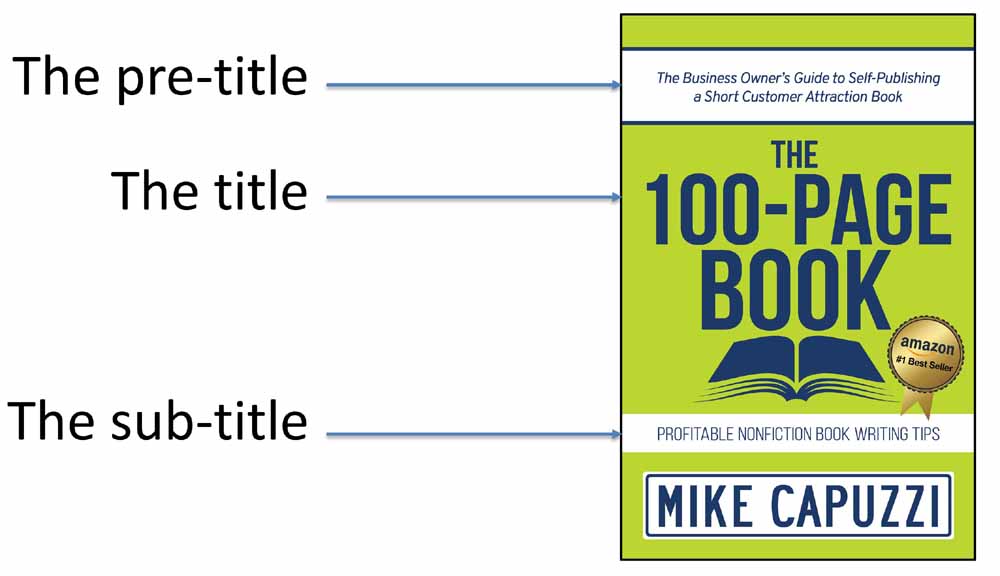Short Business Book 101: Business Book Cover Design Tips
Effective business book cover design and book design are critical and as the saying goes, "You never get a second chance to make a first impression." This couldn't be truer when it comes to your book cover.
Your book cover is the first thing potential readers see, and it needs to grab their attention instantly.
In the crowded marketplace of business books, a well-designed cover makes the difference between your book being picked up or passed over.
A powerful and attention-grabbing book cover does more than just attract eyes—it sets the tone for your entire short business book. It conveys the essence of your content, communicates your brand, and connects emotionally with your target audience.
Think of your cover as your book’s handshake. It should be firm, confident, and memorable. It signals to readers that the content inside is valuable and worth their time.
Let’s me share some in-depth tips and recommendations for a short business book cover design, including the front cover, spine, and back cover.
Business Book Cover Design Tips for the Front Cover
Designing the front cover of your business book is akin to crafting a billboard on a busy highway. You have only a few seconds to capture attention and convey your message. Here are some tips to ensure your front cover stands out:

Have a Clear & Compelling Pre-Title, Title, and Subtitle:
I like using a 3-part formula for my short business books. The pre-title describes your target audience and big benefit. The title articulates your BIG IDEA and should be prominent, easily readable, and reflective of your book’s main theme. The subtitle should provide additional context and value, clarifying the promise of your book. These various titles should deliver a clear and compelling benefit or worthy goal, etc.
Use Compelling Imagery:
Use high-quality images or graphics that resonate with your book’s subject matter. The image should be relevant and provoke curiosity or emotion.
Use Bold Colors:
Choose colors that stand out but also align with your brand. Bold, contrasting colors can help your book catch the eye even from a distance.
Use Clean Typography (Fonts):
Select fonts that are easy to read and appropriate for the tone of your book. Avoid overly decorative fonts that might detract from readability.
Six Different Short Business Book Cover Design Styles

Business Book Cover Design: Text-Based Design
Business Book Cover Design: Icon-Based Design

Business Book Cover Design: Photo Design

Business Book Cover Design: Cartoon Design

Business Book Cover Design: Author Photo Design
Business Book Cover Design Tips for the Spine
The spine of your book is crucial, especially when it’s sitting on a shelf among many others. Here’s how to make your spine pop:
Readable Text:
Ensure the text on the spine is legible, even at a glance. Use a clear, bold font for your book title and author name.
Consistent Branding:
Maintain consistency in color and typography with the front cover to ensure a cohesive look.
Adequate Space:
Don’t overcrowd the spine. Since short business books are thin, focus on making the title and author name clear rather than trying to fit too much information.
Business Book Cover Design Tips for the Back Cover
The back cover is your opportunity to sell your book further and provide essential information. Here are my recommendations for what to include:
Price and Book Category:
Not necessary if you do not plan on selling your book via Amazon or retail stores.
Reason to Read Headline:
Craft an attention-grabbing headline to precede your book description.
Compelling Description with “What’s Inside” Bullets:
Write a short, engaging summary that highlights the benefits and key takeaways of your book. Focus on what’s in it for the reader. Include a list of powerful bullets to encourage people to read your book.
Author Bio, Photo, and Contact Information:
Include a brief author bio that establishes your credibility and connection to the subject matter. Consider including a professional photo and your contact information.
Barcode and ISBN:
Ensure your book has a barcode and ISBN for retail purposes. This is essential for distribution and sales tracking.
Your Business Book Cover Design Can Make or Break Your Book
Creating a powerful and effective business book cover is both an art and a science. It requires a clear understanding of your audience, a strong sense of branding, and an eye for design. Don’t rush this process. Take the time to research, plan, and execute a cover that truly represents the value of your book.
Remember, your business book cover is a marketing tool that works tirelessly to attract and engage readers. A great cover will open doors, create opportunities, and ultimately contribute to the success of your book.
Invest the effort and resources needed to make it outstanding. Book cover design isn't something you want to be cheap about. A small investment in a professional book cover design and in a great cover yields significant returns in the form of increased visibility, credibility, and sales.
And here's the best part: if you decide to work with me, my team and I will handle all of this for you. We worry about the details so you can focus on what you do best.
From initial concept to final design, we've got you covered, ensuring your book makes a powerful impact from the moment it hits the shelves.
Business Book Cover Design FAQ
How Can I Ensure My Book Cover Stands Out on a Shelf or Online?
To ensure your business book cover design stands out on a shelf or online, focus on striking design elements that grab attention. Use bold, contrasting colors and clear, legible fonts that make the title and subtitle easy to read briefly. Incorporate compelling imagery or graphics that reflect your book's theme and appeal to your target audience. Keep the design clean and uncluttered, avoiding overly complex visuals. Consider your book's positioning in its category and aim for a unique look that differentiates it from competitors.
How Do I Choose the Right Imagery and Graphics for My Book Cover?
Choosing the right imagery and graphics for your business book cover design involves understanding your target audience and the message you want to convey. Select visuals that resonate with your readers and reflect the book's content and theme. High-quality, professional images are crucial; avoid clichéd or generic stock photos. Consider symbolic or abstract graphics that evoke the book's essence without being overly literal. Ensure the imagery aligns with your brand and maintains consistency with other marketing materials. Consulting with a professional book cover designer will help you balance creativity with market appeal, ensuring your cover is both visually appealing and relevant.
How Important Is It to Hire a Professional Book Cover Designer? Can't I Just Do It Myself?
Hiring a professional book cover designer is crucial for creating a polished, marketable book. While DIY options exist, including book cover templates and premade book covers and ebook covers, a professional book cover designer brings expertise in visual aesthetics, market trends, and effective design principles. They understand how to balance colors, fonts, and imagery to capture attention and convey your book’s message clearly. A well-designed business book cover significantly impact sales, attracts your target audience, and differentiate your book in a competitive market. Investing in a professional ensures your book looks credible and appealing, enhancing its chances of success. DIY efforts often lack the finesse and impact needed to stand out.
What Are the Best Practices for Using Fonts on a Business Book Cover?
Best practices for using fonts on a business book cover design focus on clarity, professionalism, and visual appeal. Choose clean, modern fonts such as Helvetica, Arial, or Roboto for easy readability. For a touch of sophistication, consider Garamond or Baskerville. Limit your font choices to two or three to avoid a cluttered look—typically one for the title and another for the subtitle or author’s name. Ensure sufficient contrast between the text and background for readability. Align your font style with the book's tone and target audience; for instance, sans-serif fonts often convey a contemporary, professional feel. Consistent typography across your cover helps establish a cohesive, polished appearance.
How Important Is Branding in My Business Book Cover Design and How Do I Integrate It?
Branding in your book cover design is crucial as it reinforces your professional identity and helps establish recognition and trust with your audience. To integrate branding, use your brand’s color palette, fonts, and logo consistently. Ensure the cover design aligns with your overall brand aesthetics and messaging. Incorporate elements that reflect your brand’s personality and values, making your book instantly recognizable as part of your business. A cohesive look across your book and other marketing materials enhances credibility and fosters a stronger connection with your readers, contributing to your brand’s long-term success and visibility.
